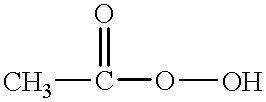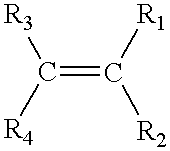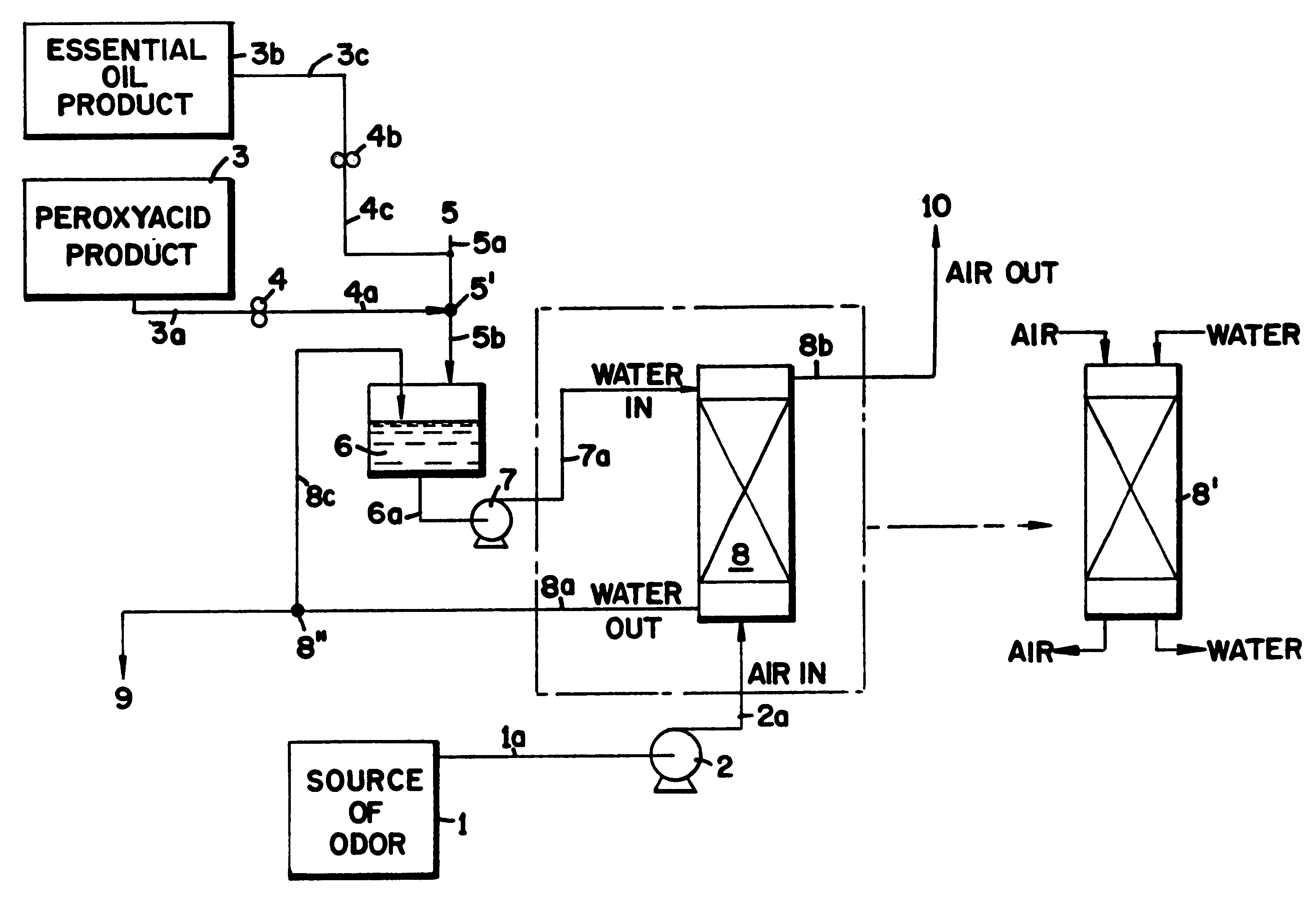Simultaneous use of peroxygen and olefin compound in odor reduction
- Summary
- Abstract
- Description
- Claims
- Application Information
AI Technical Summary
Benefits of technology
Problems solved by technology
Method used
Image
Examples
working example # 1
WORKING EXAMPLE #1
The objective of this example was to compare the prior art treatment of using peroxyacids alone with the improved and synergistic method of co-injecting peroxyacids and essential oils for odor elimination. Table 12 compares the results of using synergistic blends of peroxyacids and essential oils (experiments 5-7) versus control treatments of using either alone (experiments 1-4).
The above data shows that synergistic blends of peroxyacids and essential oil / olefins are noticeably more effective than either tested alone. Experiment 7 shows that even a minor amount of essential oil / olefin has a beneficial effect. The use of peroxyacid alone does little to eliminate malodors while the use of pine oil alone is a poor masking agent. Thus, it was found that when using peroxyacids alone a musty-bitter smell remains after treatment of a carcass cooker scrubber, and a sewery-pine smell is achieved if pine oil is used alone. However, if both odor treatment components are co-ad...
working example # 2
WORKING EXAMPLE #2
This example demonstrates the use of mixed essential oils for enhanced odor controls using peroxyacids in an industrial rendering plant cooker scrubber.
working example # 3
WORKING EXAMPLE #3
H.sub.2 S Odor Reduction Through Addition of POAA and Activated Olefins (Drager Gas Detector)
The level of hydrogen sulfide (H.sub.2 S) in the scrubber system in a rendering plant can be reduced by addition of a commercial peroxyacid (about 15% aqueous peracetic acid; Tsunami.RTM. 100--Ecolab Inc.) to the scrubber water. Further reduction of H.sub.2 S can be achieved by combining the peroxy acid with an olefin compound (an essential oil is exemplified above). In this example, we investigate the effectiveness of other olefins used with a peracid. We found that additional reductions in the level of H.sub.2 S occur with olefins present. The H.sub.2 S reduction was especially marked with those olefins that are activated by substituent functionalities and / or pendant groups. These activator groups include: alkyl groups, aryl groups, alkylaryl groups, carbonyl groups (carboxylates, esters, amides, etc.), conjugated alkenyl or alkynyl groups, heteroatoms (especially N, S, P...
PUM
| Property | Measurement | Unit |
|---|---|---|
| Fraction | aaaaa | aaaaa |
| Percent by mass | aaaaa | aaaaa |
| Percent by mass | aaaaa | aaaaa |
Abstract
Description
Claims
Application Information
 Login to View More
Login to View More - R&D
- Intellectual Property
- Life Sciences
- Materials
- Tech Scout
- Unparalleled Data Quality
- Higher Quality Content
- 60% Fewer Hallucinations
Browse by: Latest US Patents, China's latest patents, Technical Efficacy Thesaurus, Application Domain, Technology Topic, Popular Technical Reports.
© 2025 PatSnap. All rights reserved.Legal|Privacy policy|Modern Slavery Act Transparency Statement|Sitemap|About US| Contact US: help@patsnap.com



